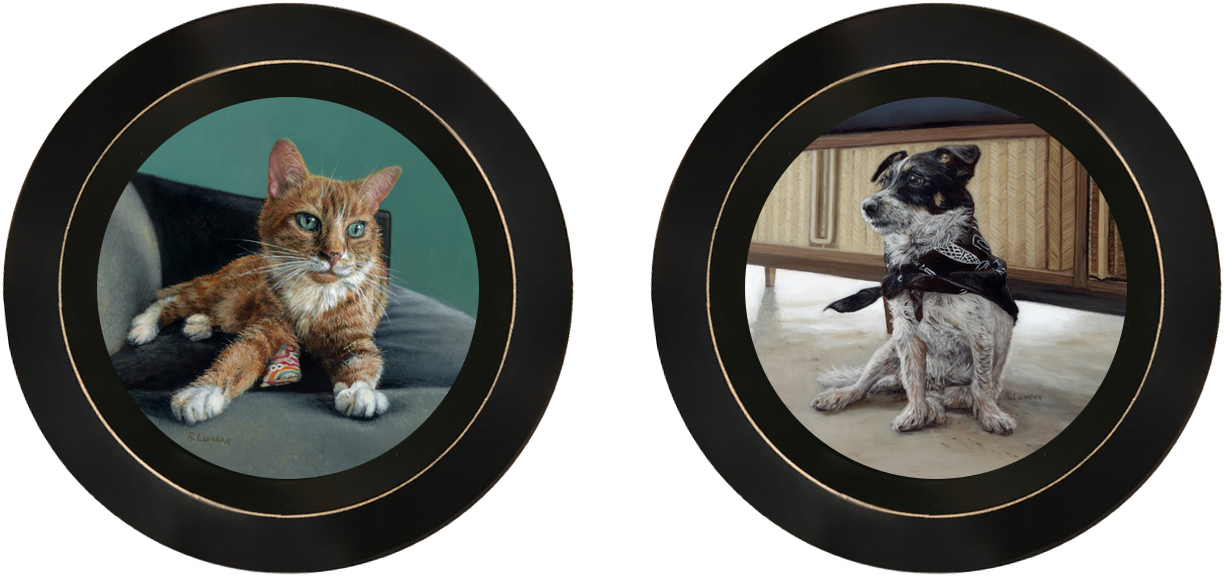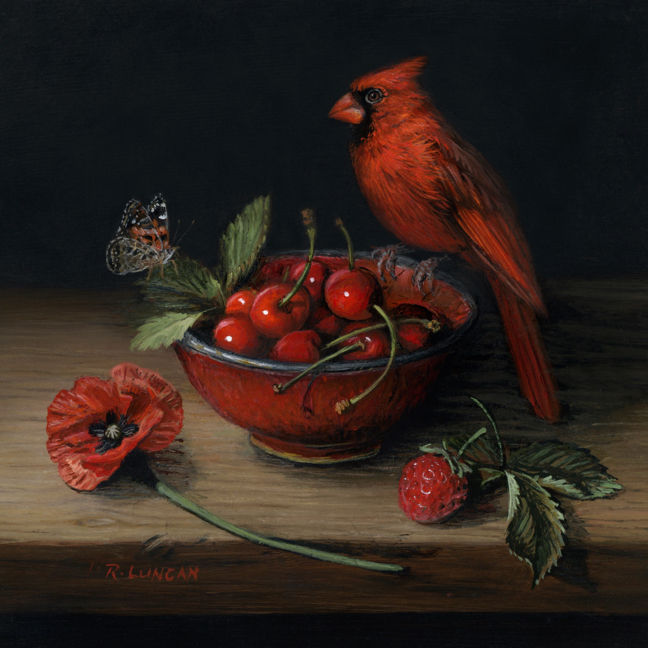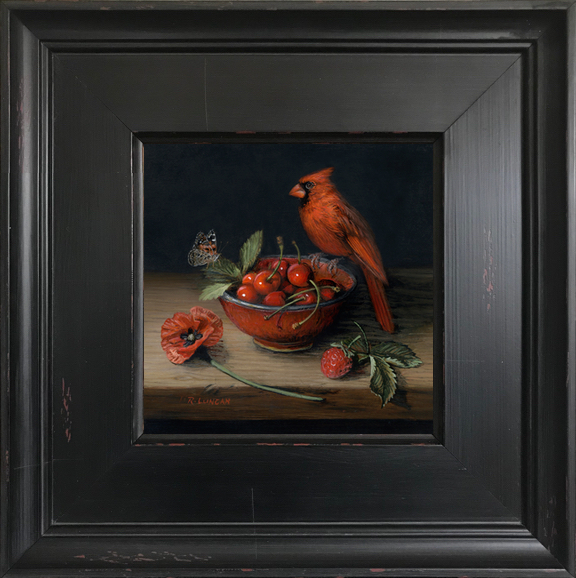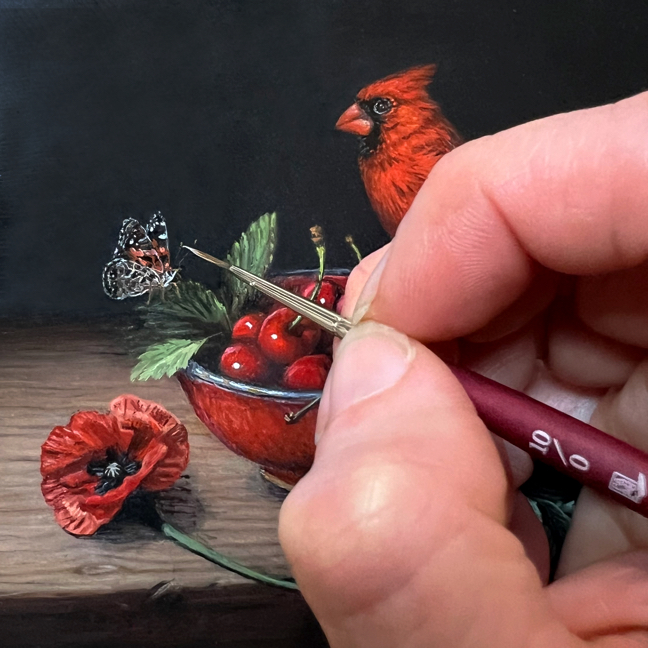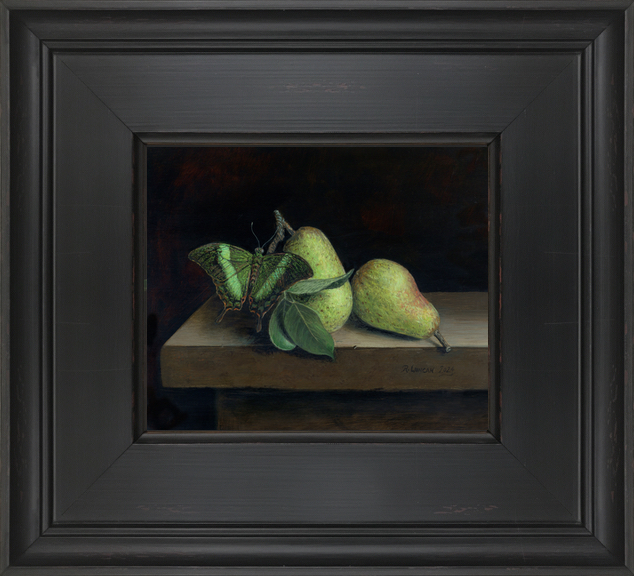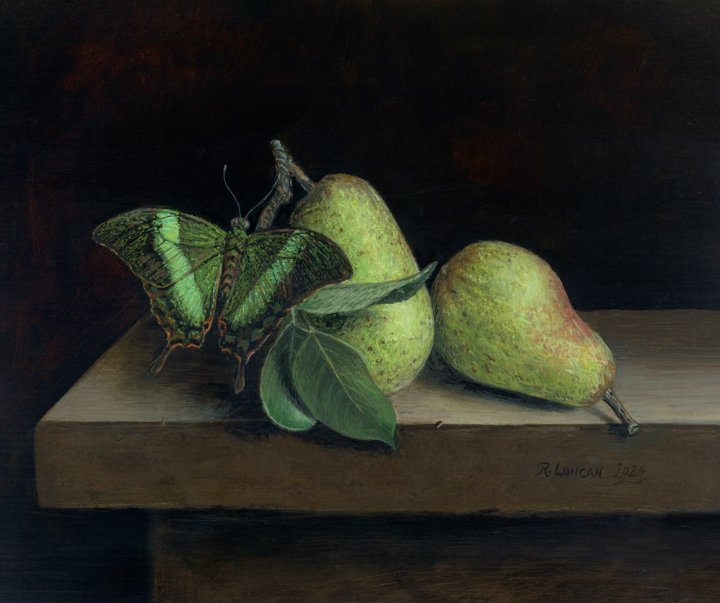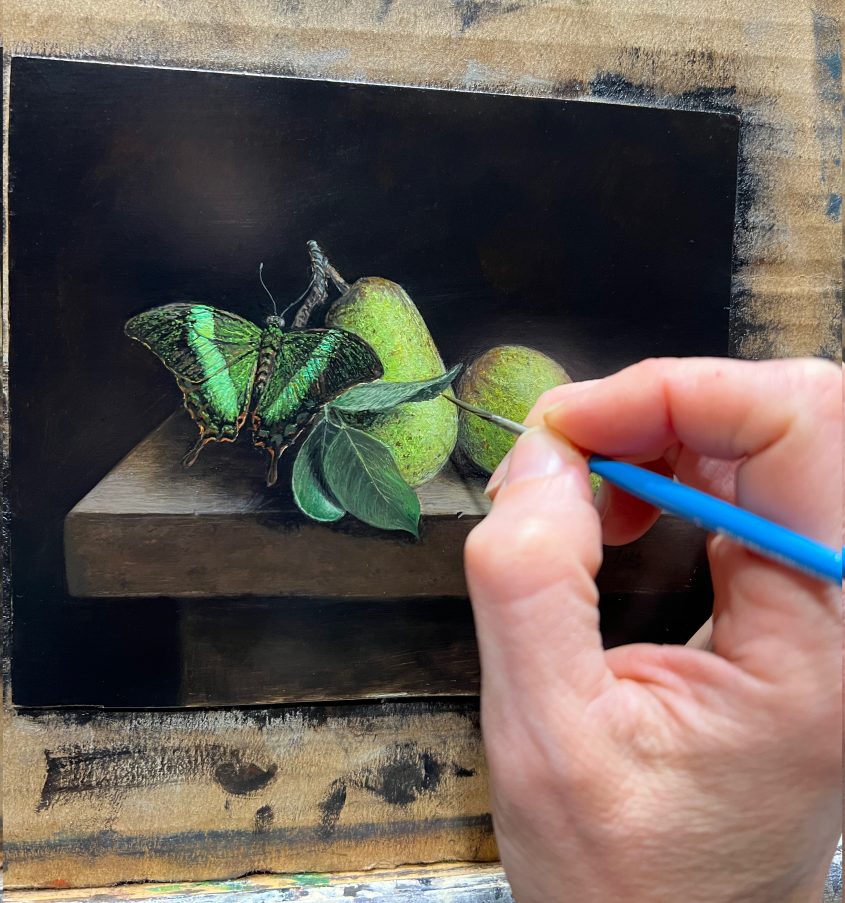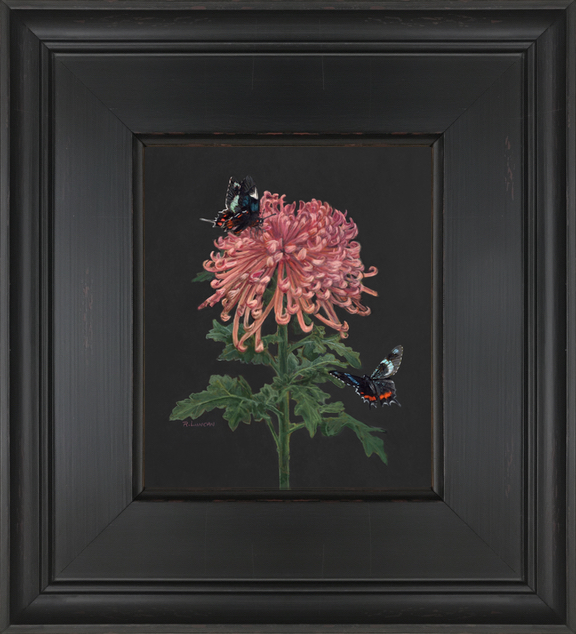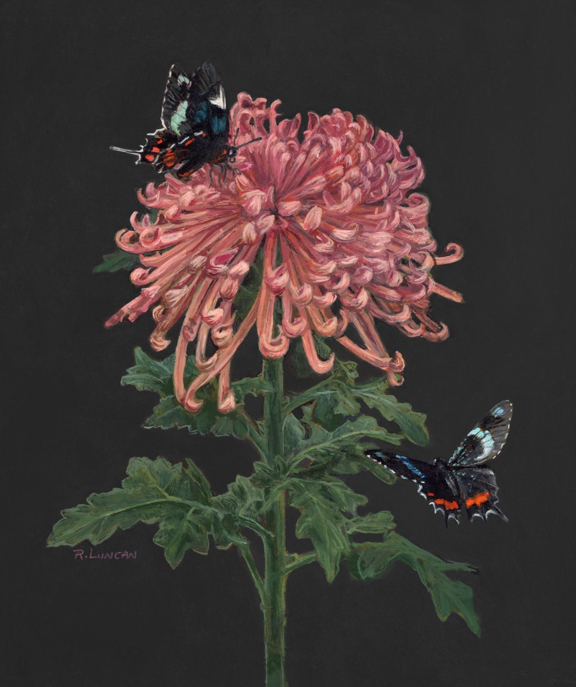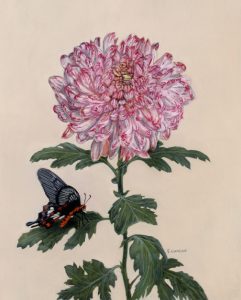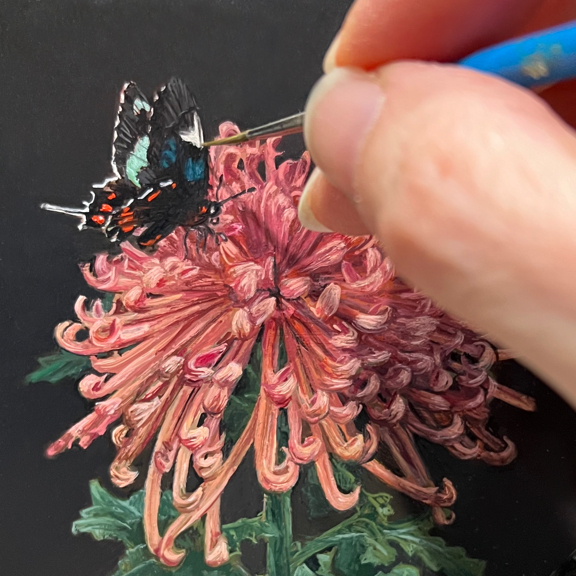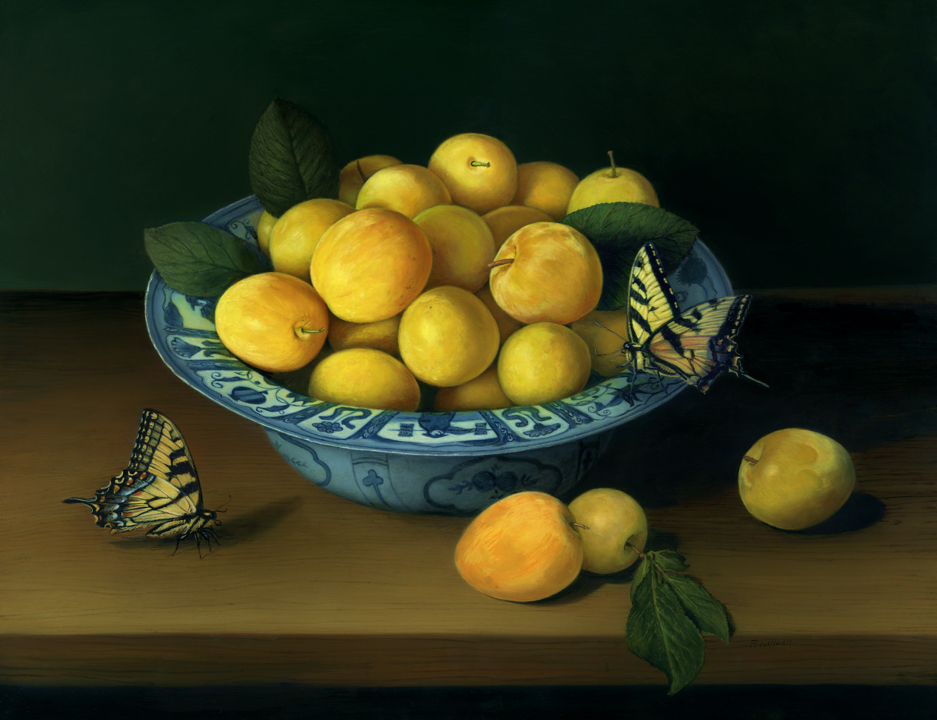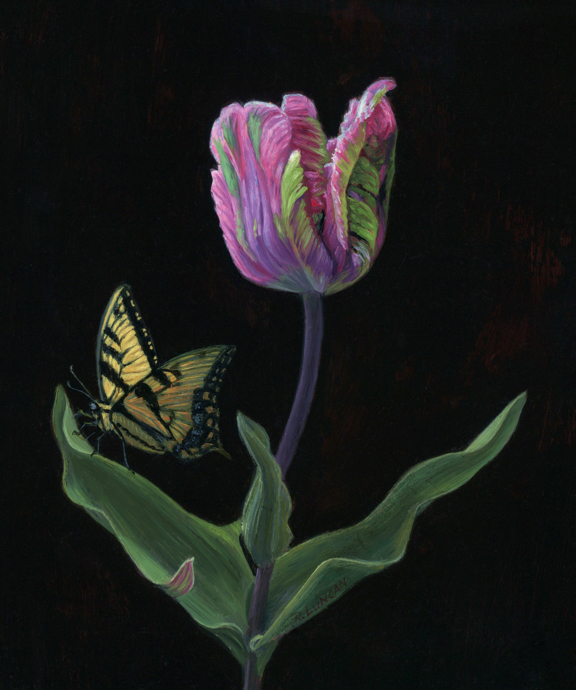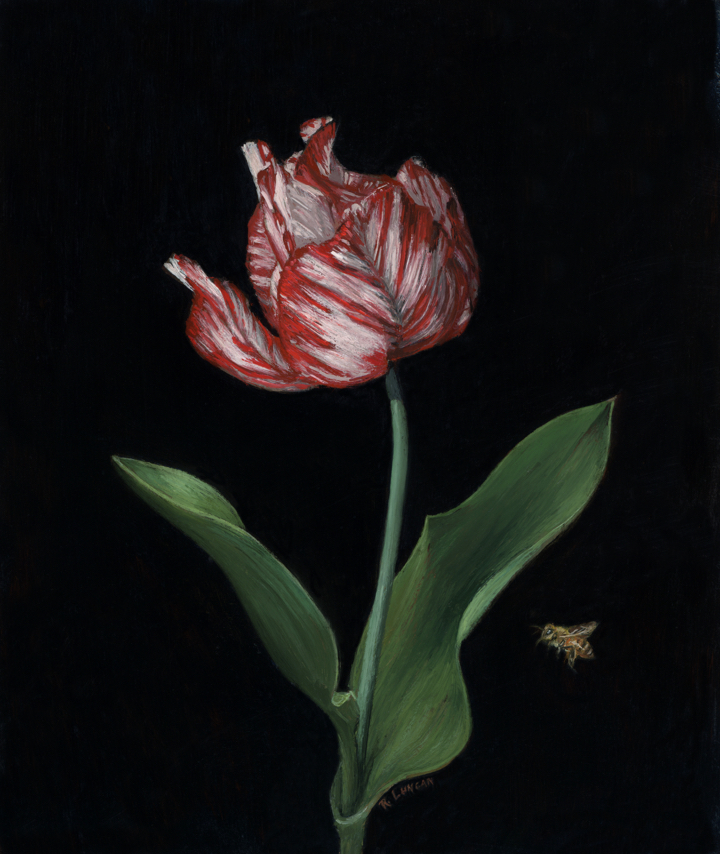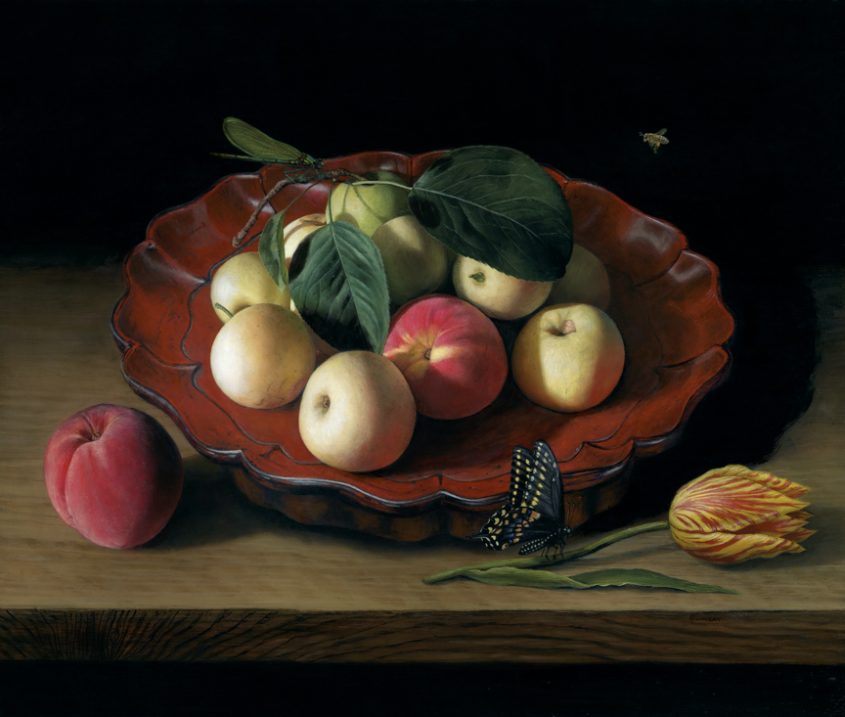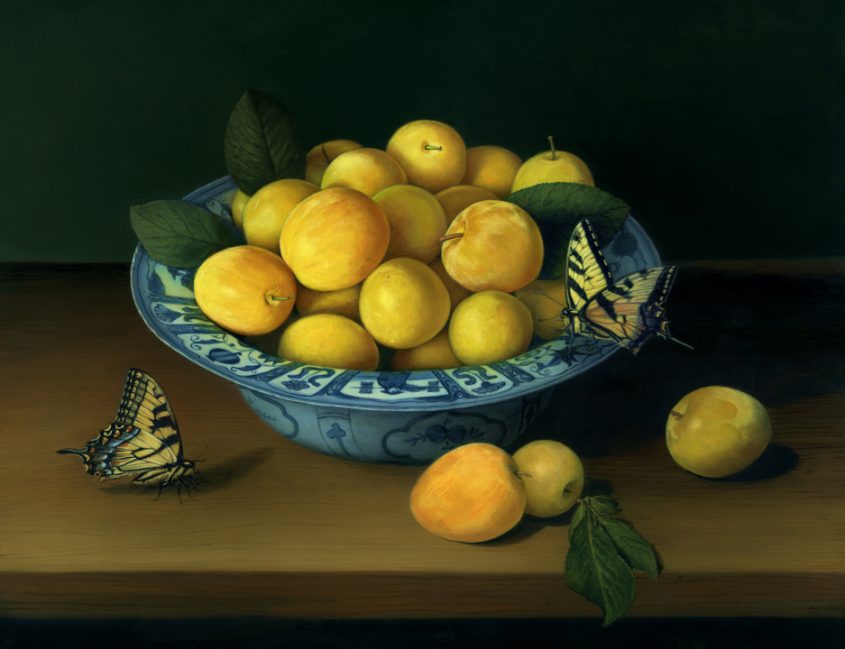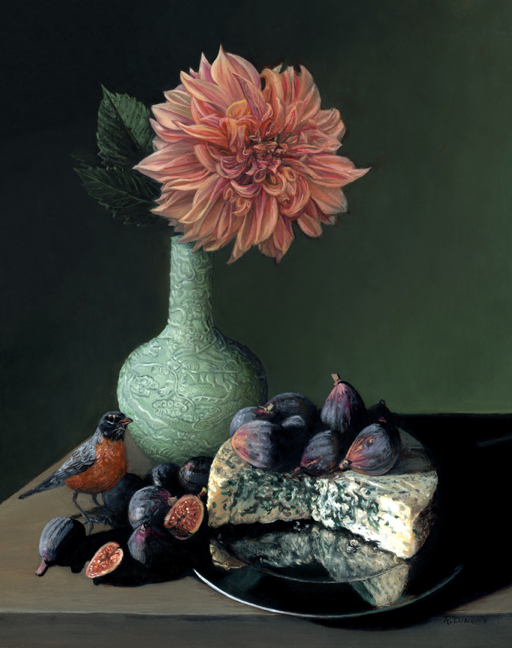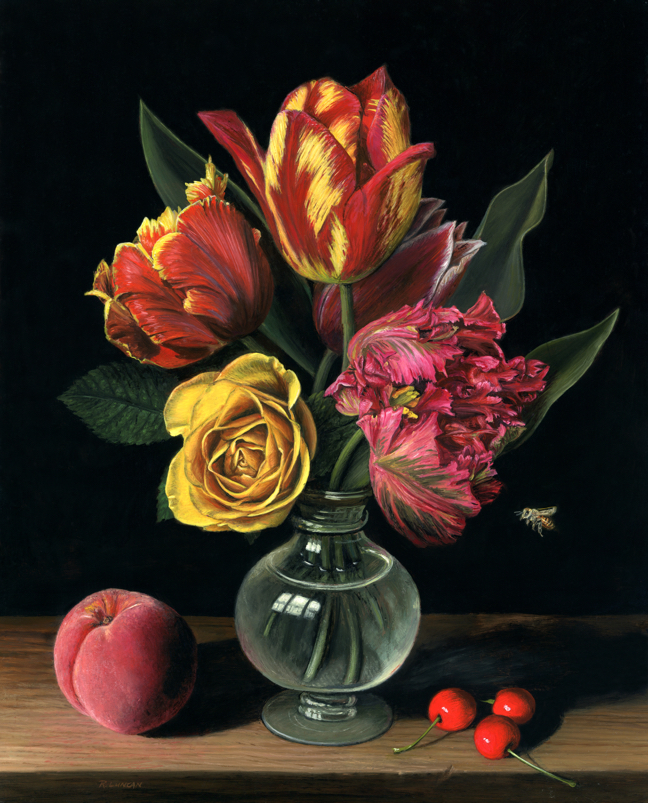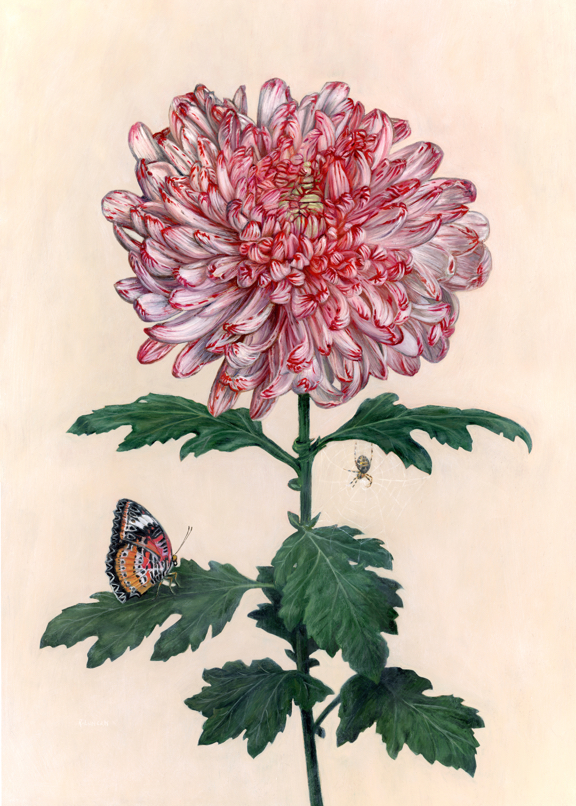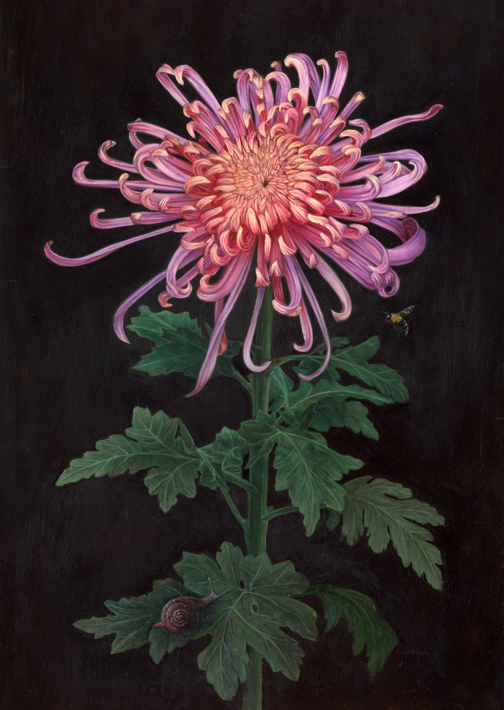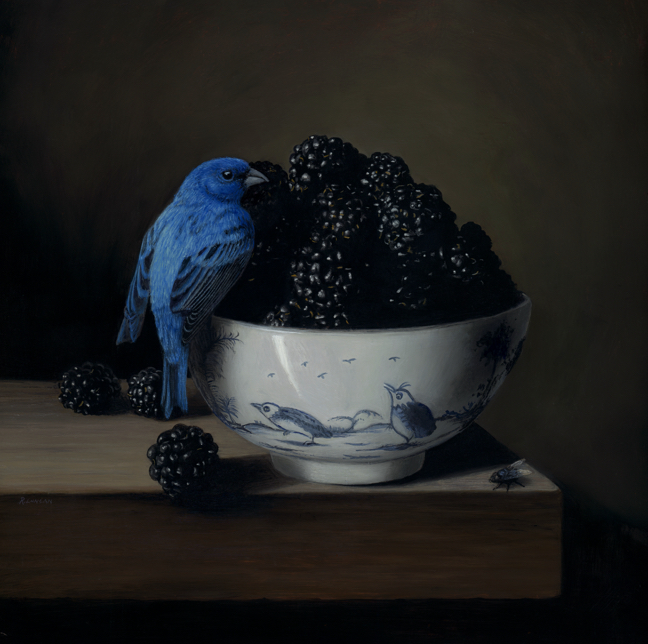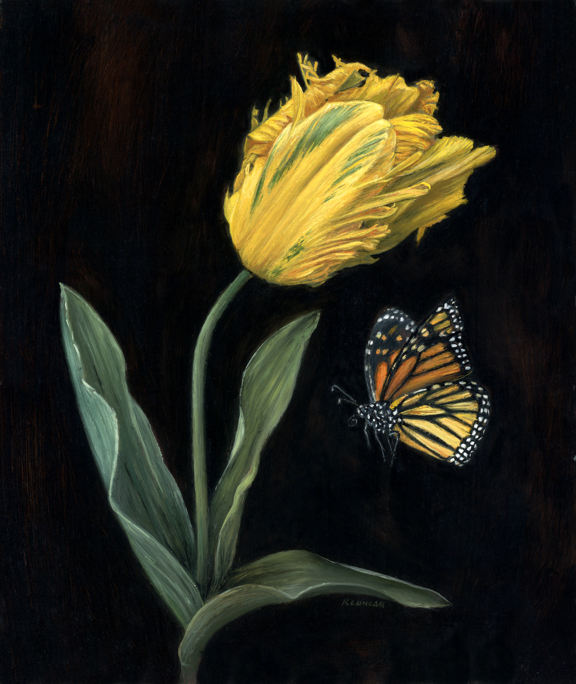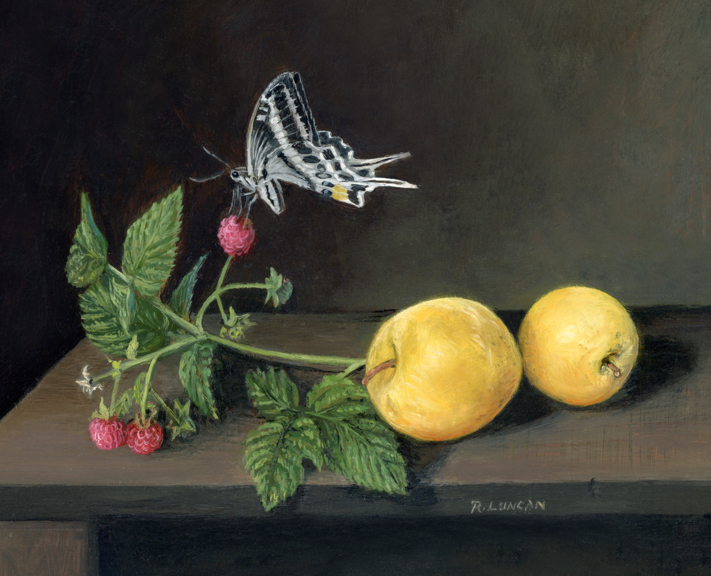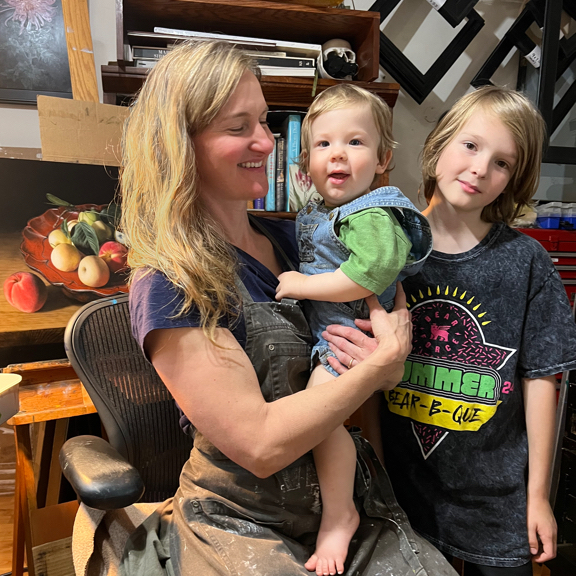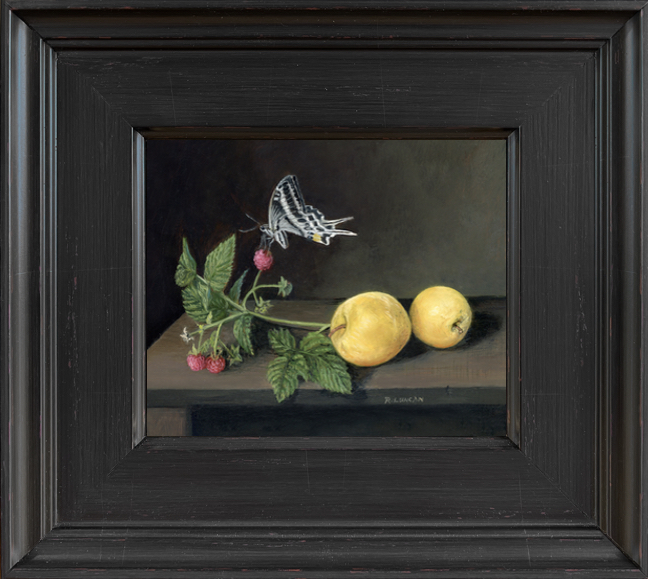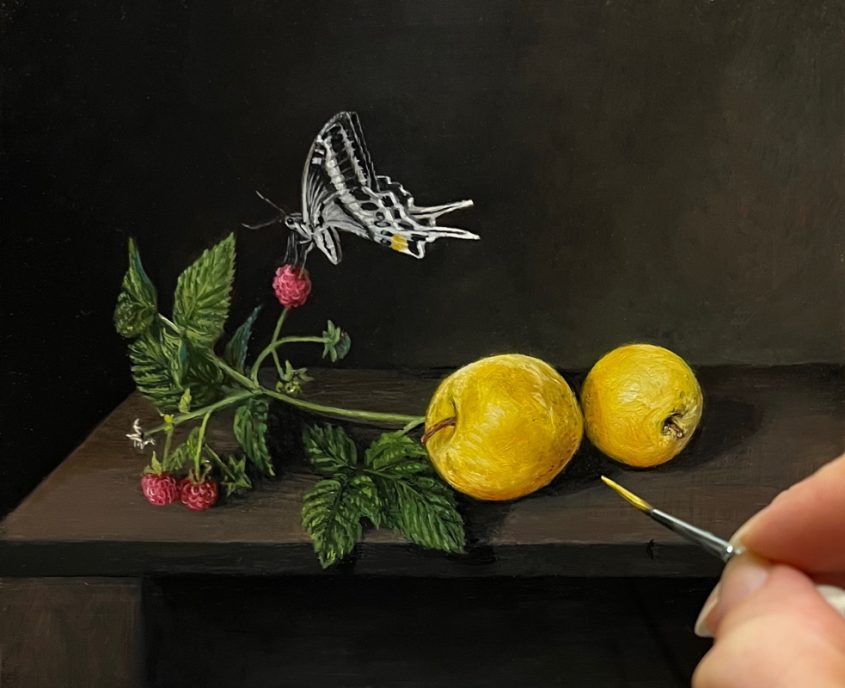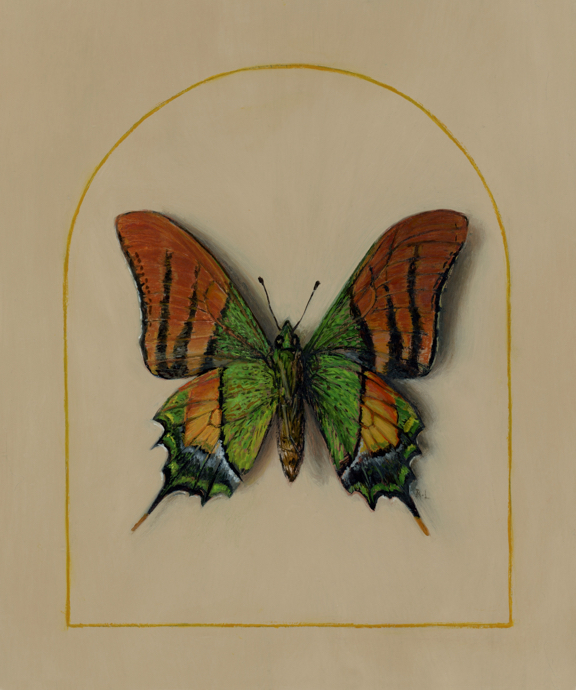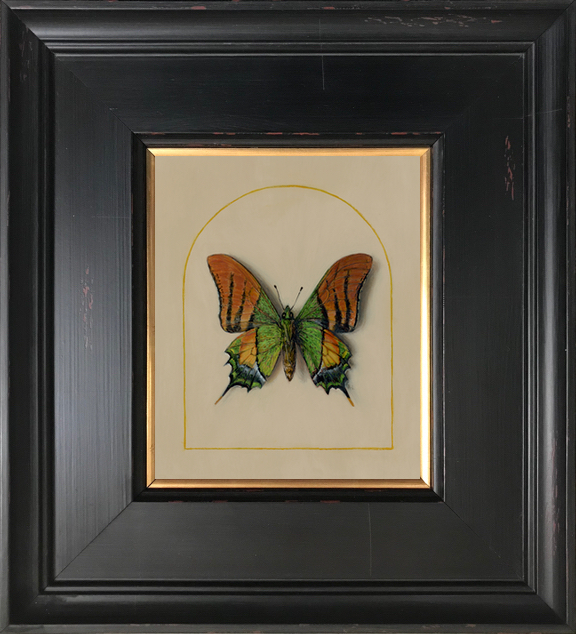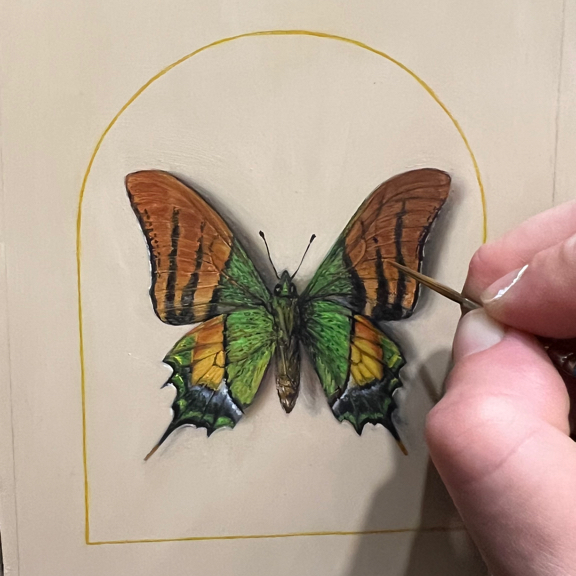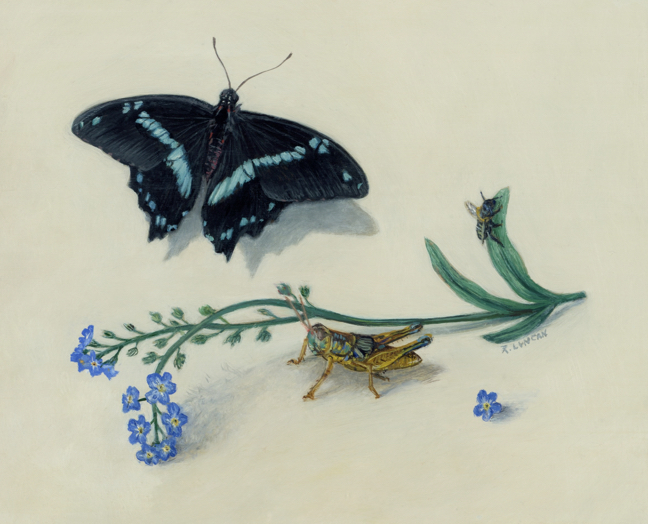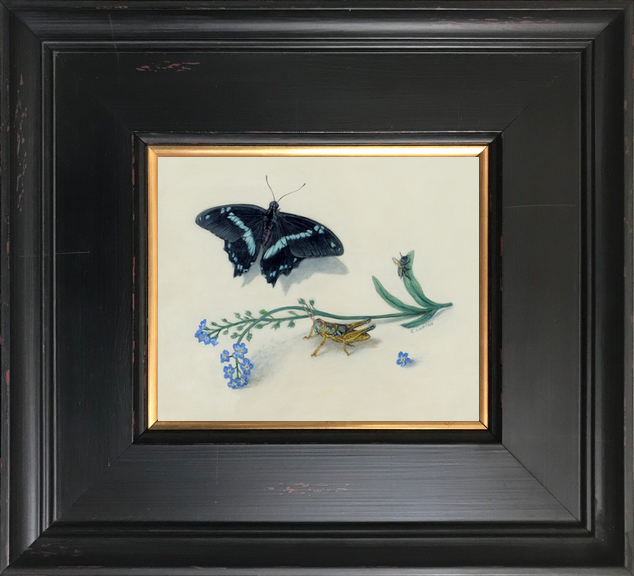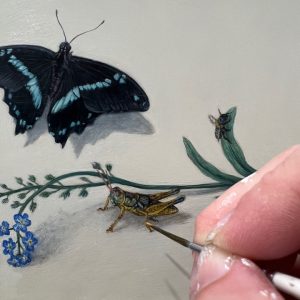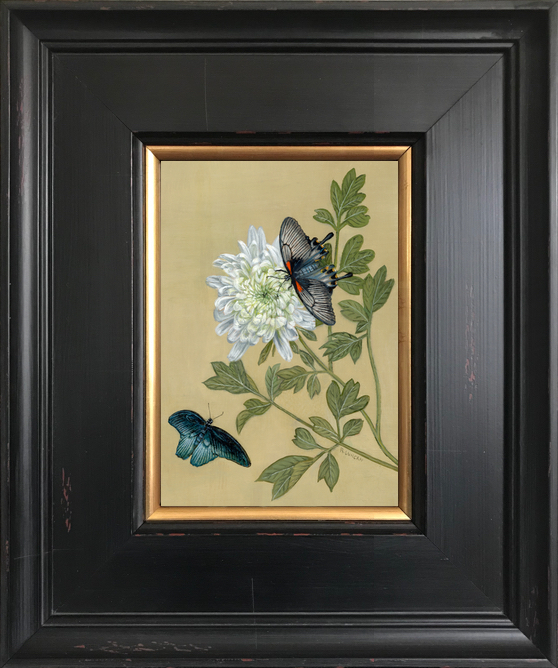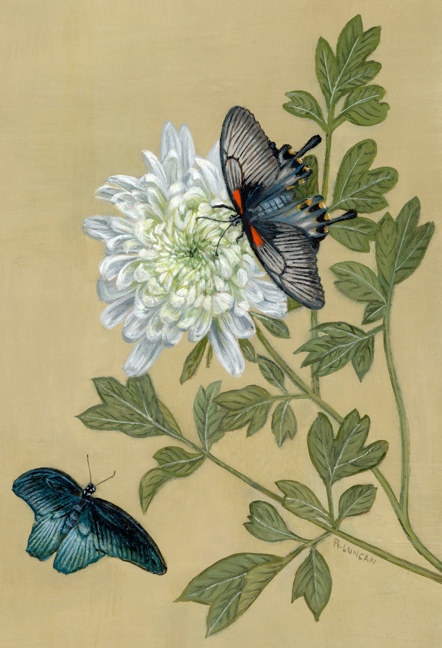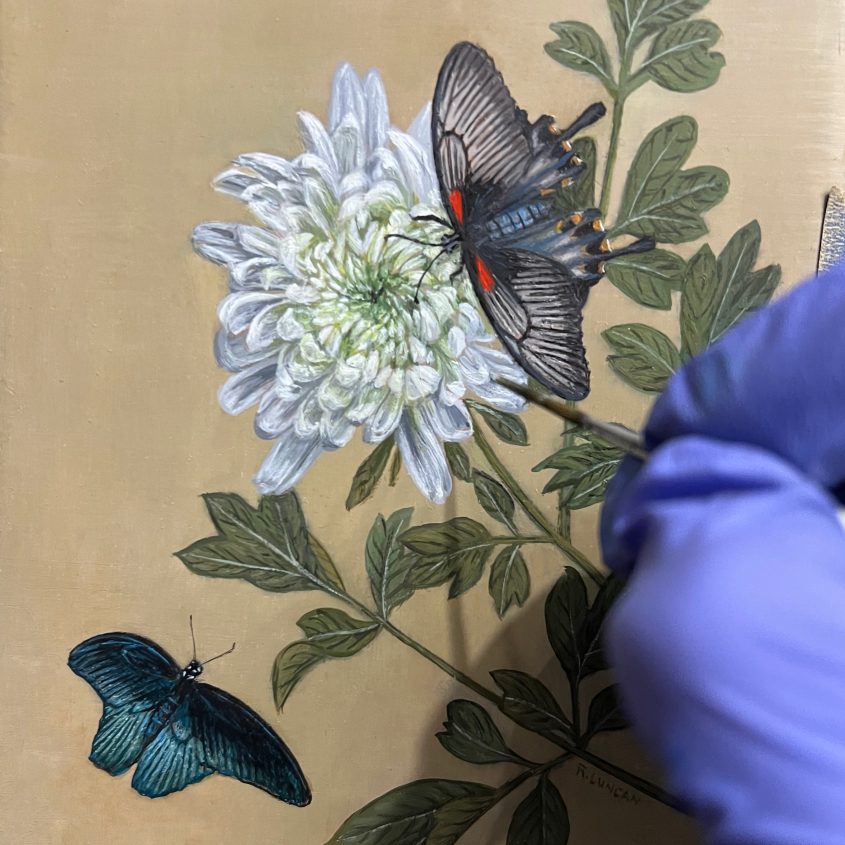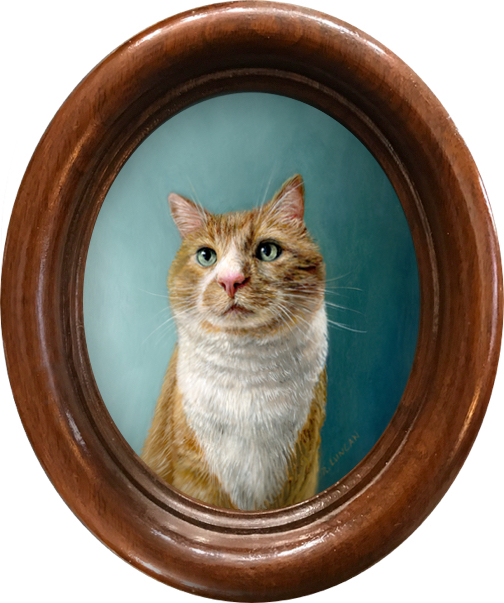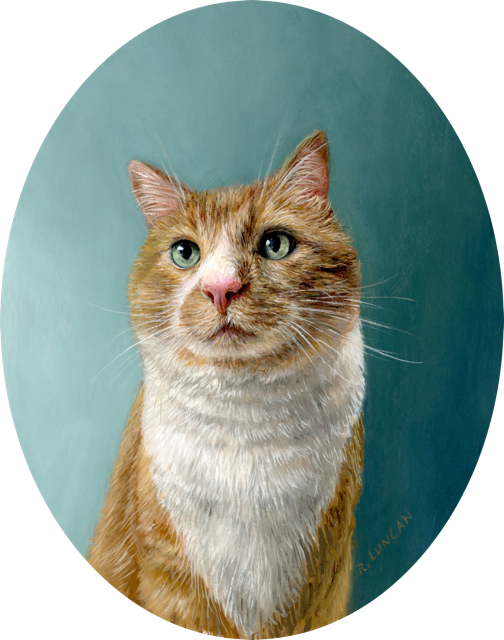These two portraits—of Winston the dog and Sloop the cat—were painted for my longtime friend Michael Alm, a sculptor and furniture maker whose distinctive patterned plywood designs often appear in his work. Michael’s eye for materials and love for his pets made this pair especially meaningful to paint.
Capturing Winston
Winston, a black-and-white mixed breed dog, is shown seated in front of one of Michael’s plywood cabinets. I knew from the start that I wanted to include the signature texture and angles of the furniture in this piece. The lighting is direct, casting sharp reflections on the concrete floor and giving the portrait a grounded, contemporary atmosphere.
Because of the highly detailed nature of my painting process, it’s essential that the composition is finalized before I pick up a brush. In the original reference photo, a dark cushion intersected Winston’s head—visually distracting and not ideal for framing his face. I digitally repositioned the furniture so that his head was cradled by a clean section of patterned plywood. The cabinet’s perspective and Winston’s gaze naturally lead your eye to the left, but a carefully placed handle at the edge of the painting subtly redirects your attention, bringing you back into the portrait.
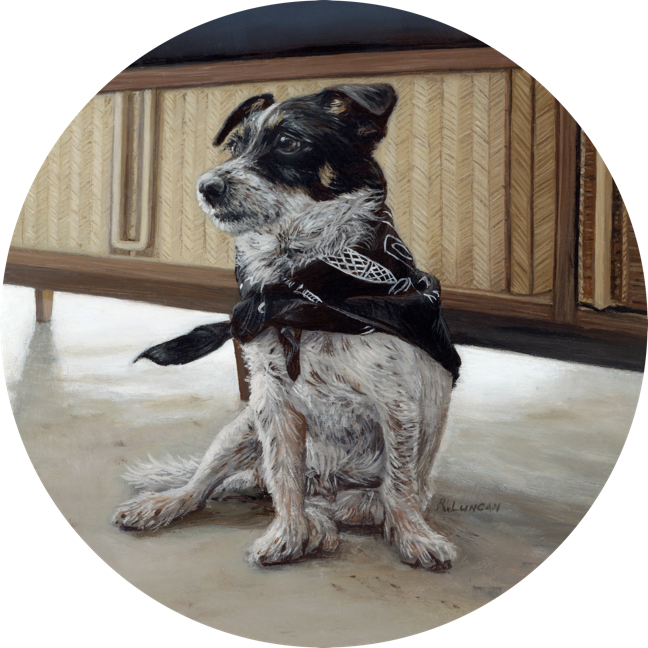
A Portrait of Sloop
Sloop, Michael’s ginger cat, was painted lounging on a sofa, one of his favorite spots. I included one of his toys in the foreground and modified the background to echo the teal green of his eyes, a decision that emphasized his vibrant coloring. Unlike Winston’s more structured setting, Sloop’s portrait is softer and more intimate—matching his feline charm.
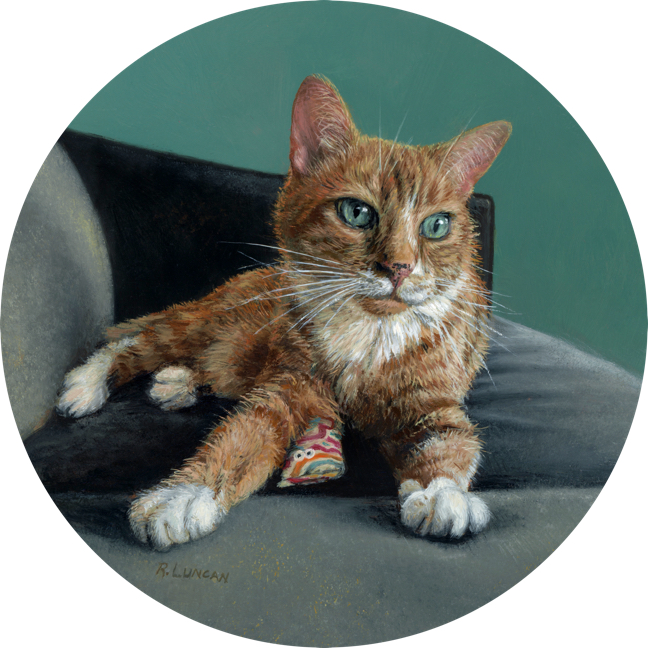
Honored Recognition
The portrait of Winston received an Honorable Mention in The Artist Network’s 4th Annual Best of Show | Pets Art Competition. It will be featured alongside other winners in the September/October 2025 issue of Artists Magazine and on ArtistsNetwork.com.
More About Michael Alm
Michael’s work as a sculptor and woodworker is both thoughtful and meticulous. You can explore his creations on his website almfab.com or follow his build videos and creative projects on his YouTube channel, which has over 600,000 subscribers.
